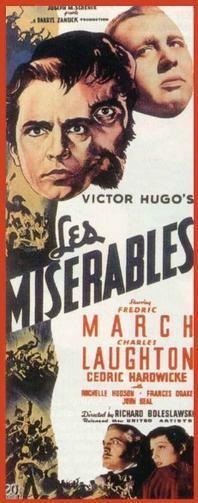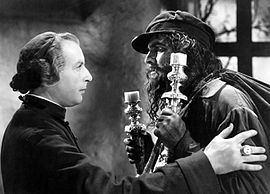Les Misérables (1935 film)
Updated on
Edit
Like
Comment
8.8 /10 1 Votes
100% Rotten Tomatoes Genre Drama, History, Romance Screenplay W. P. Lipscomb Country United States | 7.7/10 IMDb Music director Alfred Newman Duration Language English | |||||||||||||||||||||||||||||||||
 | ||||||||||||||||||||||||||||||||||
Release date April 20, 1935 (1935-04-20) Based on Les Miserables byVictor Hugo Cast (Jean Valjean / Champmathieu), (Inspector Javert), (Bishop Bienvenu), (Cosette), (Fantine), (Marius) Similar movies Victor Hugo wrote the story for Les Miserables and The Hunchback of Notre Dame | ||||||||||||||||||||||||||||||||||
Les mis rables trailer german deutsch hd
Les Misérables is a 1935 American drama film starring Fredric March and Charles Laughton based upon the famous Victor Hugo novel of the same name. The movie was adapted by W. P. Lipscomb and directed by Richard Boleslawski. This was the last film for Twentieth Century Pictures before it merged with Fox Film Corporation to form 20th Century Fox. The plot of the film basically follows Hugo's novel Les Misérables, but there are a large number of differences.
Contents

The film was nominated for the Academy Award for Best Picture and the Academy Award for Film Editing. The National Board of Review named the film the sixth best of 1935.

Cast

Differences from the novel
This adaptation made quite a lot of changes, many of which can also be found in later adaptations:



References
Les Misérables (1935 film) Wikipedia(Text) CC BY-SA
